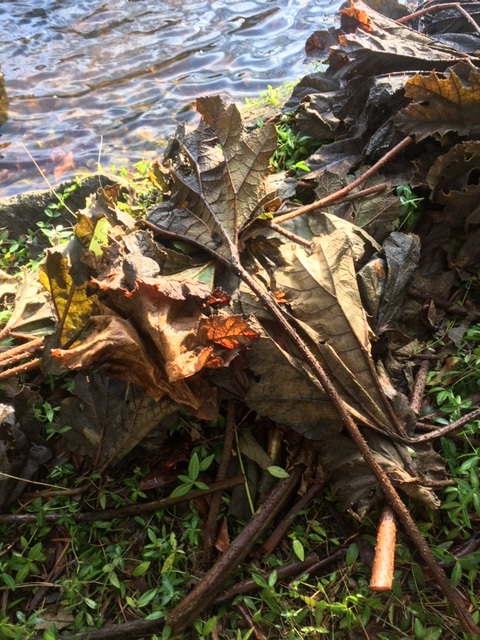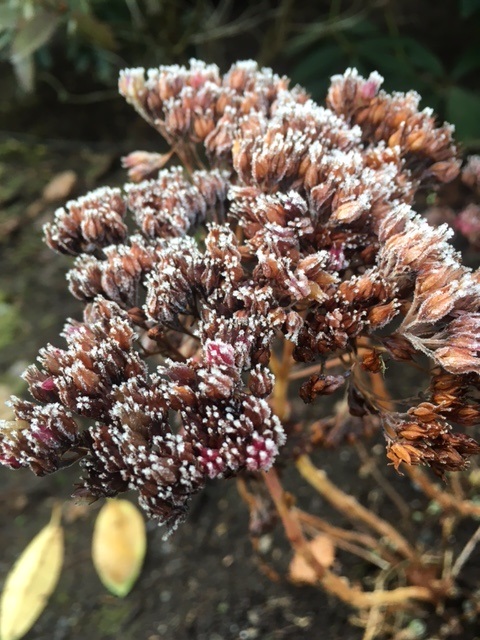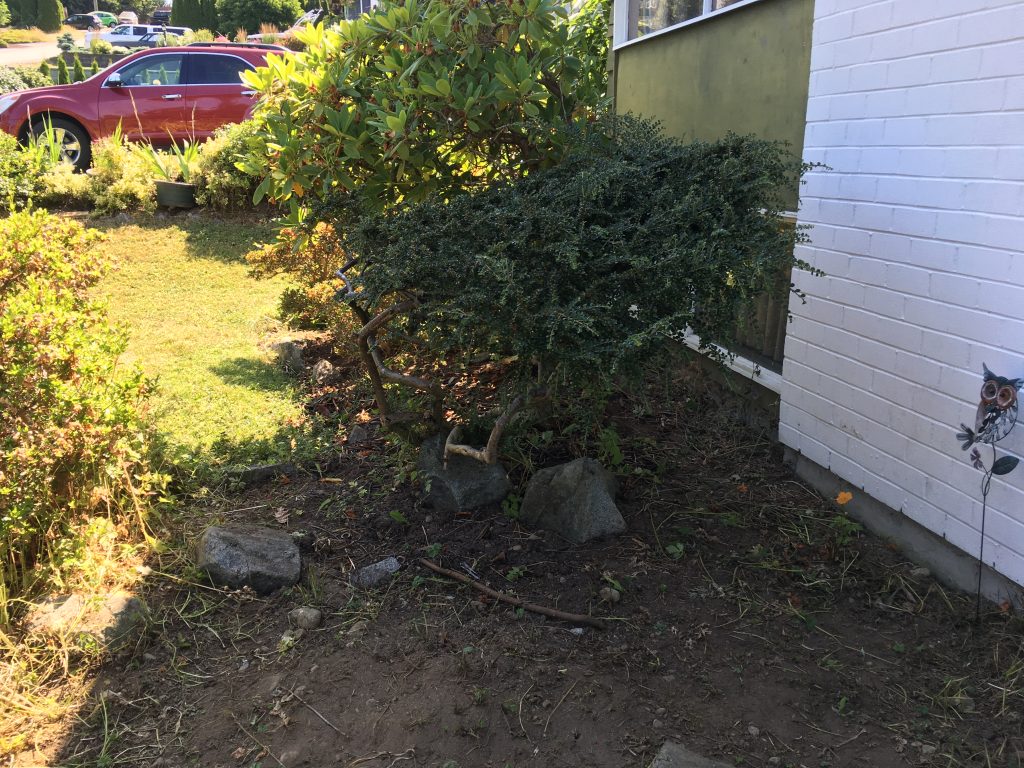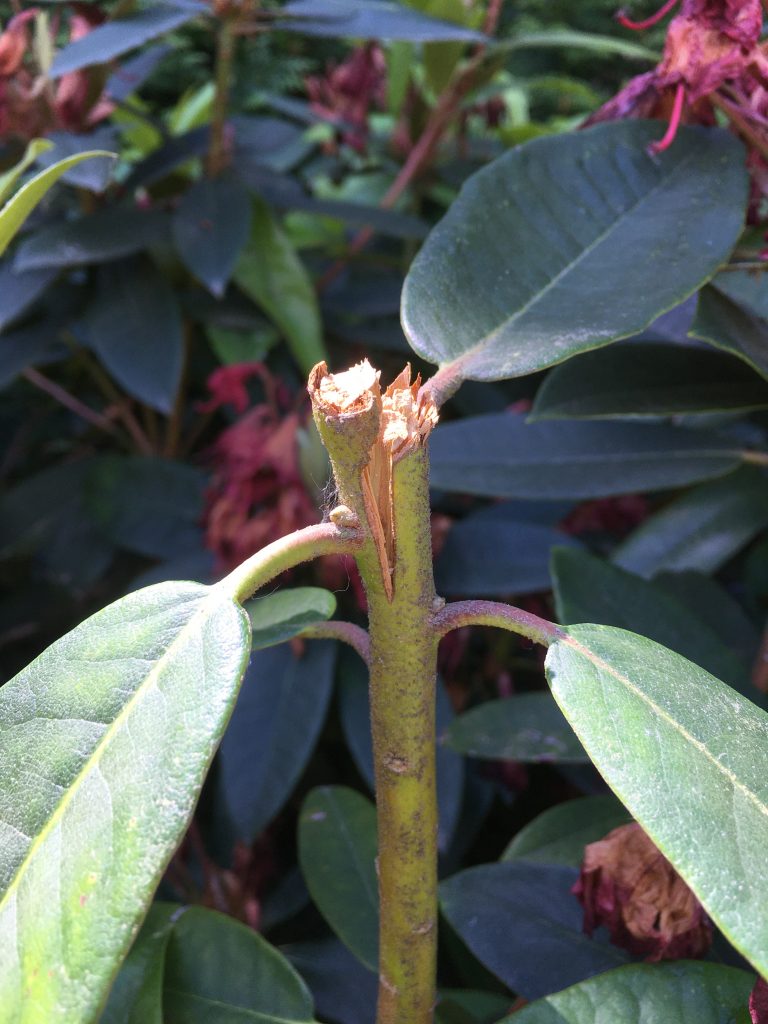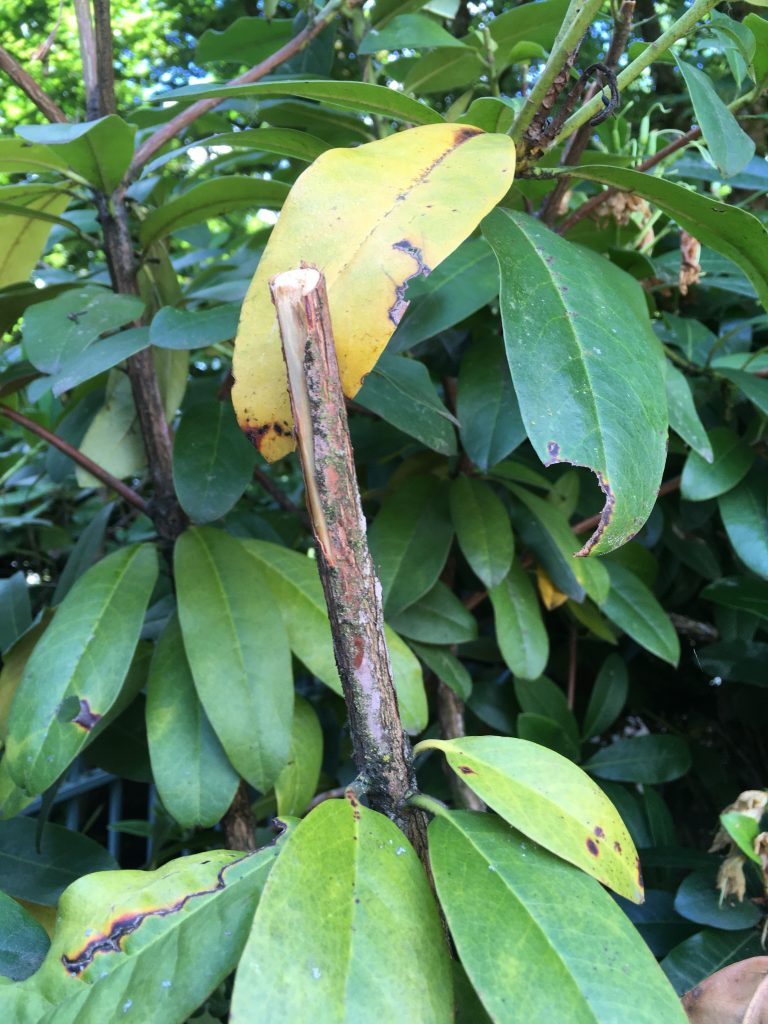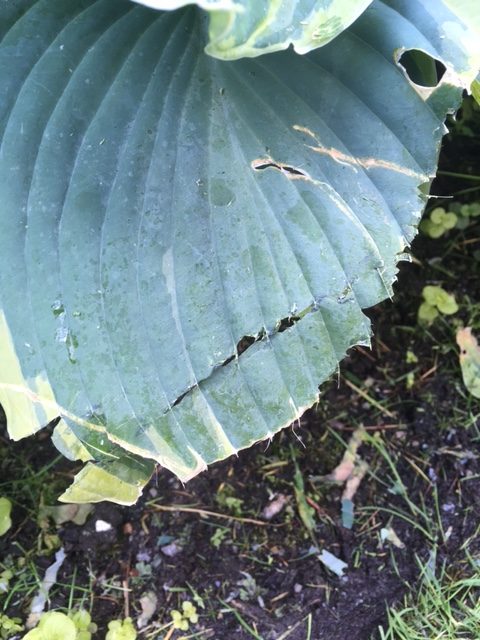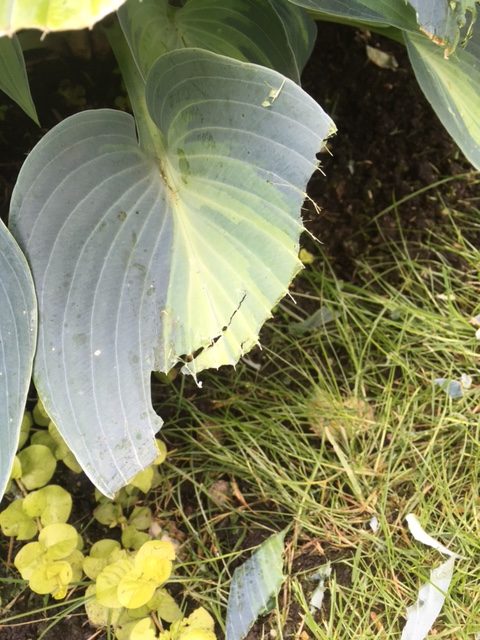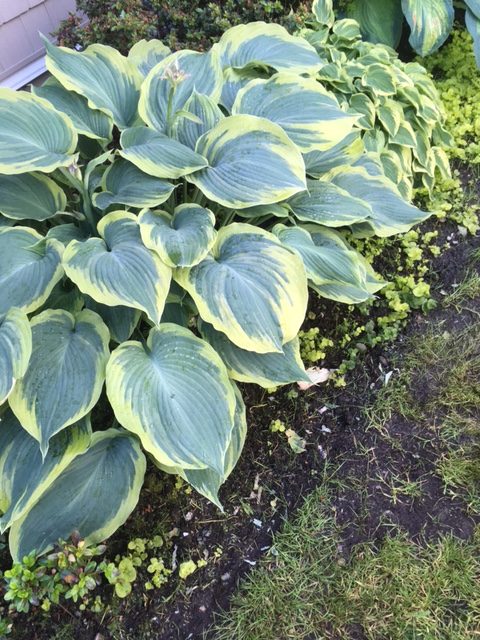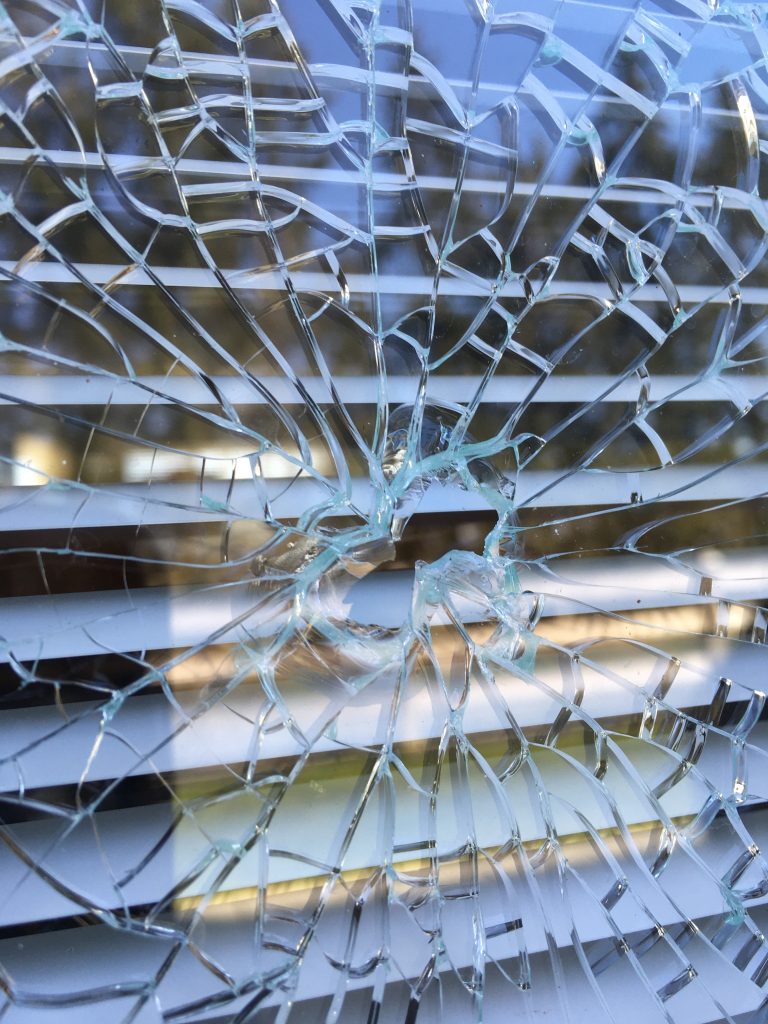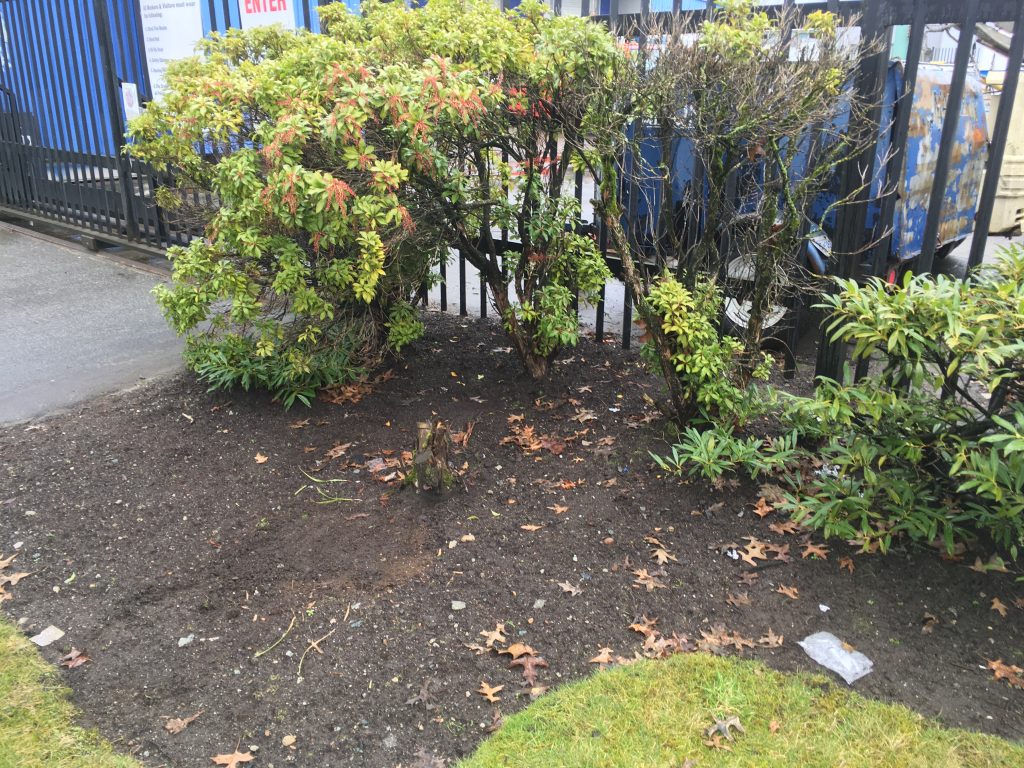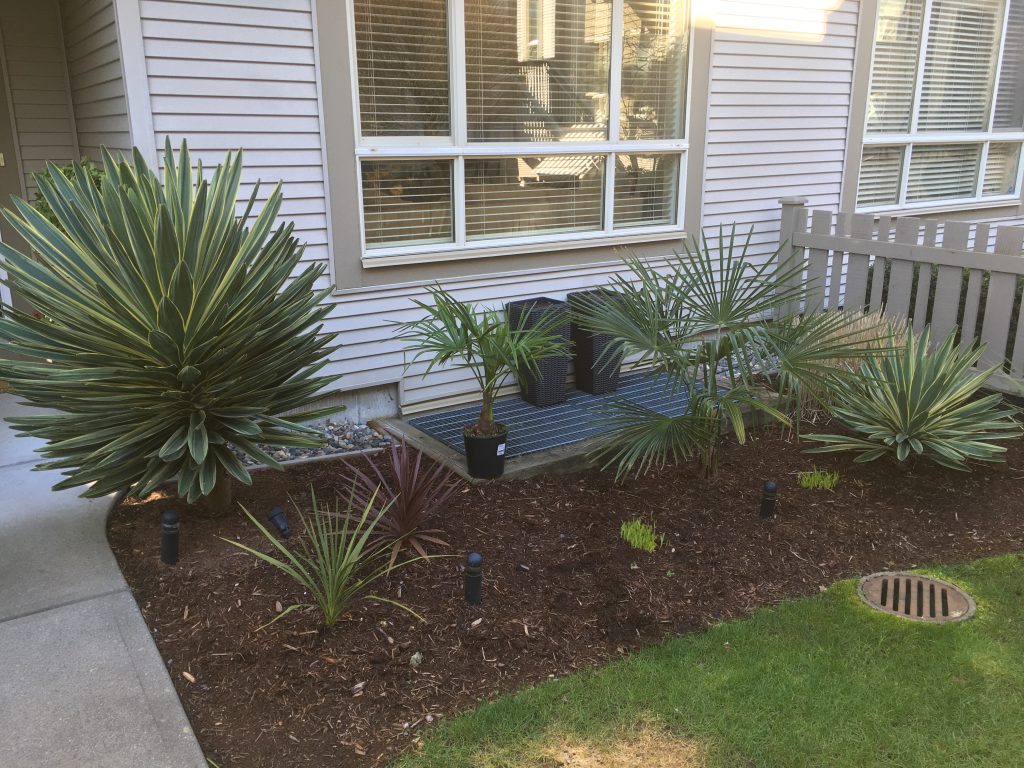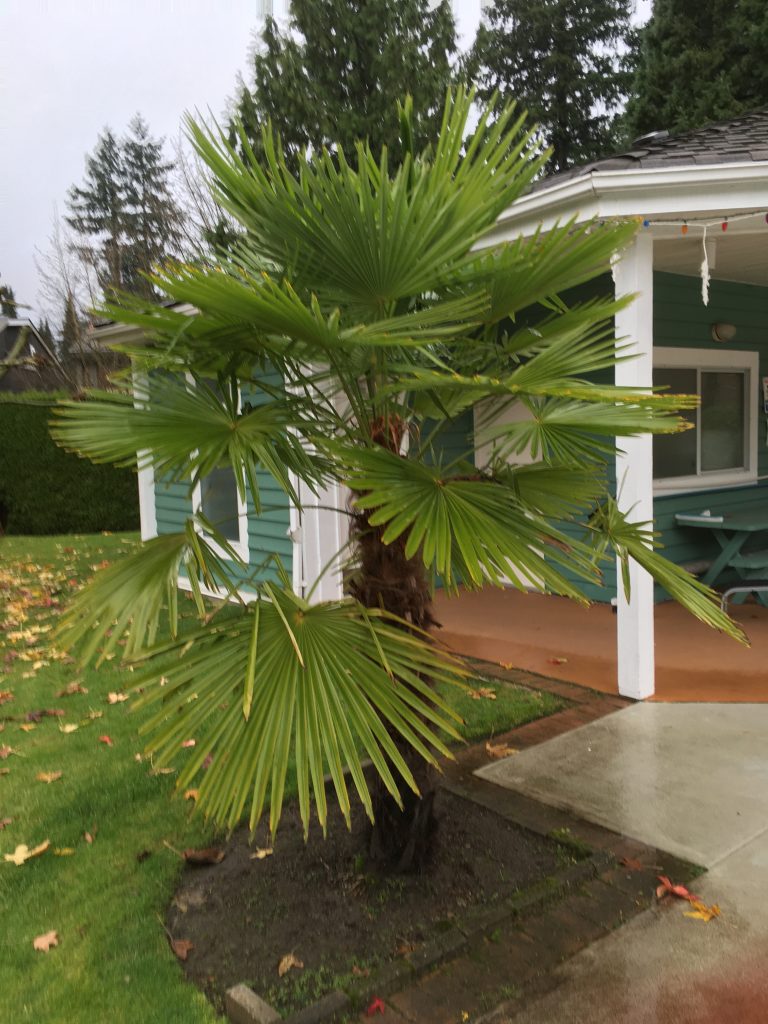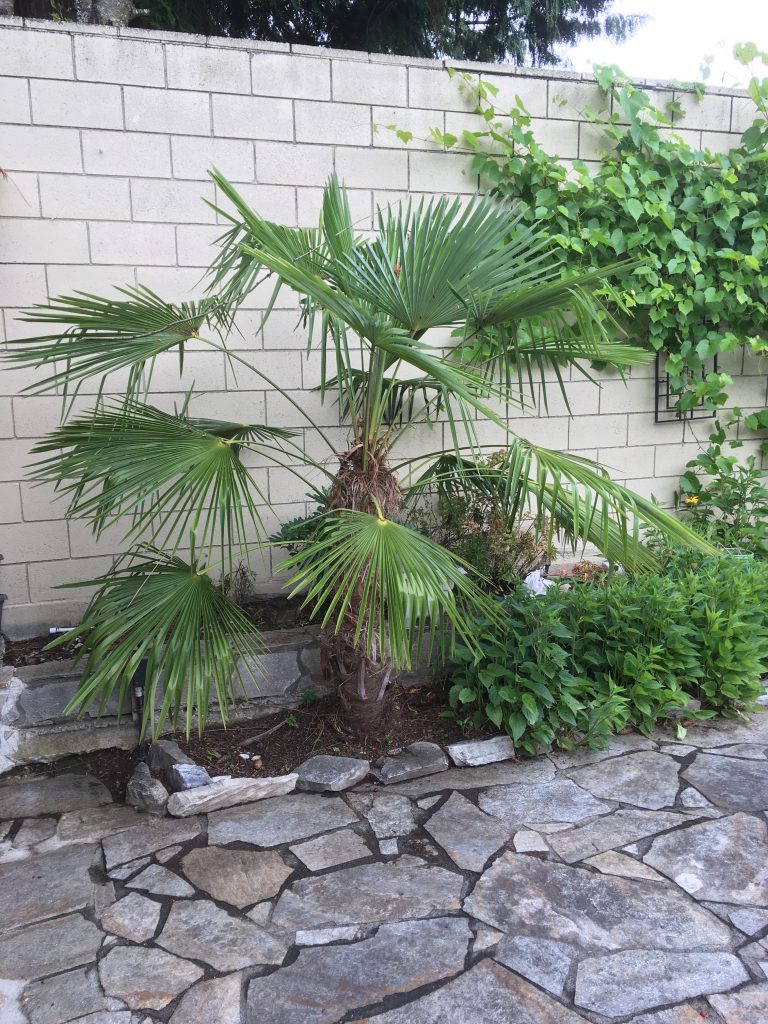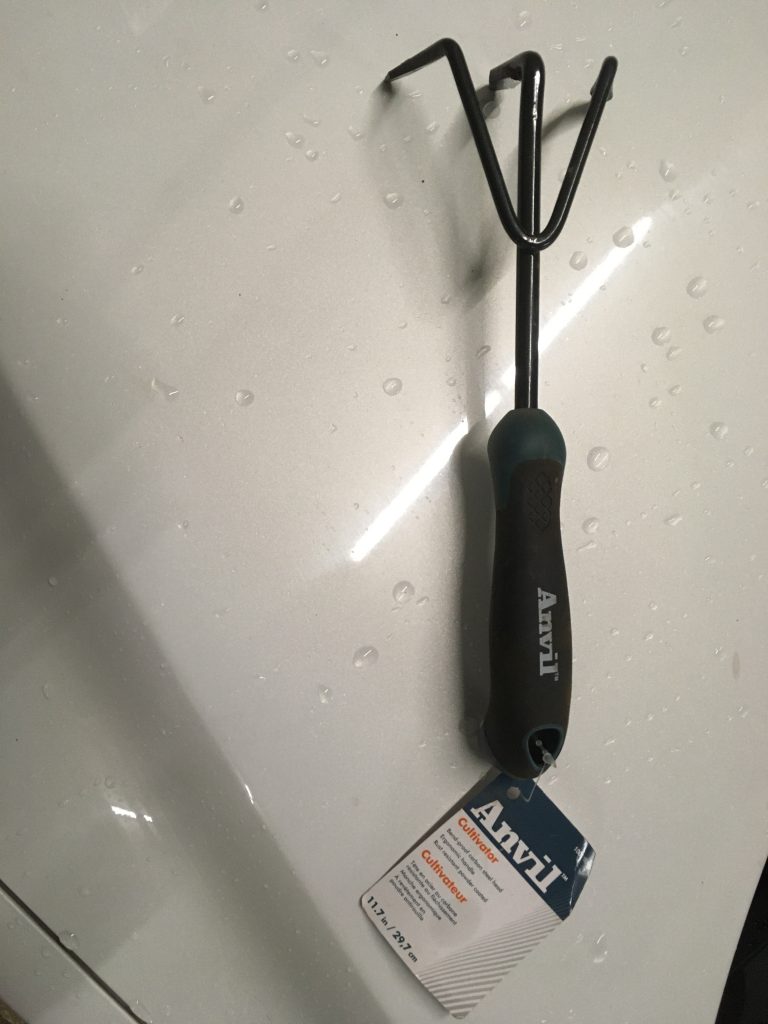
In your face plant
I love Gunneras. They almost make me laugh because they’re so big and imposing with their huge umbrella-like leaves. I happened to run into a few specimens at a garden in Morgan Creek, Surrey, last week but the show was clearly over.
Many of the spent leaves, now completely brown, were drooping into the pond. And this is already a hint: Gunneras require moist soil conditions.
They also need space and shelter. So, whoever designed this large water feature garden knew what she was doing. I found the plants at the pond edge, under deciduous trees where they have shade or semi-shade conditions. They all had plenty of space.
Gunneras work best as specimen plants. Fully grown, they’re hard to miss.
Last step
Gunnera buds are tightly packed around the crown. So, remember this one last step: cut back the leaves and stack them over top of the crown to protect it from frost.
I remember seeing a pile of giant Gunnera leaves stacked high by a creek at Como Lake, in Coquitlam. My first reaction was that someone forgot to clear away the debris. Now I know better, years later. The giant leaves protect the crown from frost.
Because Gunnera require lots of space, we don’t get to cut them back very often. Most strata (multi-family) complexes don’t have large gardens that would fit Gunnera specimens. This one does, so we had some fun cutting it back.
You can tell from the rough leaf piles that we need more practice. Twelve months from now, we’ll try to stack the leaves nicely. I always tell my apprentices to do everything in the field; and experience as many new things as possible. This was one such experience. Now they can file away Gunnera and remember the one critical late season step.
I hope you do, too.

